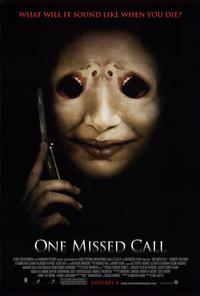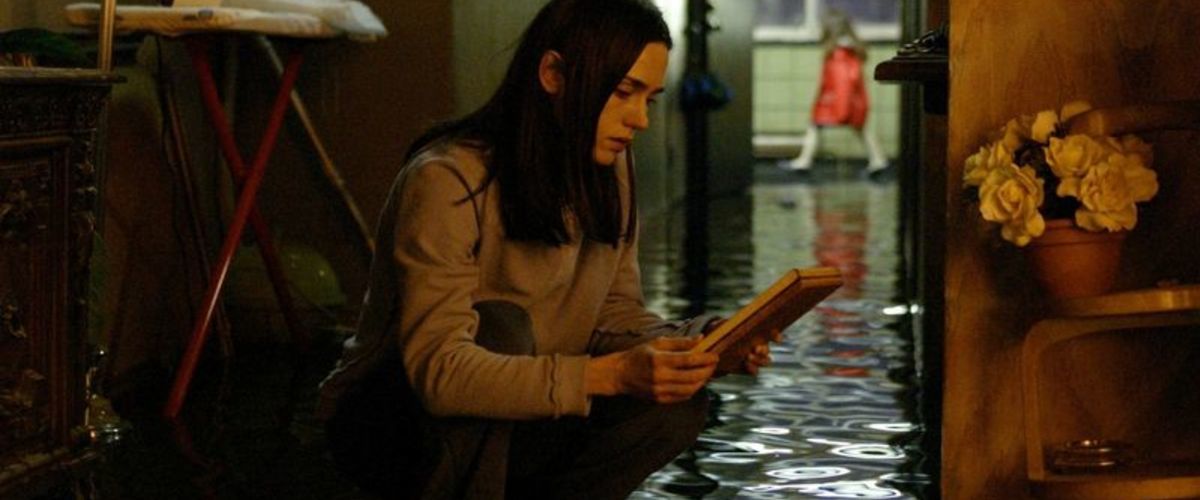What story are you trying to tell in this first piece?
In attempts to capture the atmosphere of Japanese directed horror, I have inserted a supernatural being into this scene, continuing the visual story from design seven which follows the struggle and brutal murder of a young girl in this cabin and now her spirit lingers inside the cabin, unleashing vengeance upon those whom enter it. For further information on this vengeful and culture-based Japanese spirit/ghost, refer to my case study on Ringu (1998).
Design process
To create a before and after, I duplicated the blood patterns from design seven.
I placed the outline for the supernatural being in the centre of the scene, using blurry brush strokes to make the being appear more faded.
To make the atmosphere more more mysterious, I moved the supernatural being to the left and added some clouds to the night sky.
To ensure realism is captured successfully, I created a projected shadow on the floor for the supernatural being.
Acknowledging the reflective and bouncing nature of the projected light source, I realised the supernatural being required a dull back shadow. To make sure the scaling was correct, I made the supernatural being taller.
Finally, I put a light fade on the supernatural being and inserted a reflective back shadow behind the ghost/spirit. I also made sure the scenes matched in terms of background content by adding in the grass layers from design number six.
Formal analysis:
Summary:
Summary:
Monochromatic colours - see design five
Depth of field - see design five
The lighting is directional and is clearly seen on the floor, side of the window and cracks in the walls & door frame. Three point lighting is displayed using key, fill and back lights.
Camera - see design five
Low and high value colours are present within the greens of the grass, browns on the walls, floor, window and door as well as the dark blue of the night sky, the grey of the clouds and finally, the black and white of the supernatural being.

The lighting is directional and is clearly seen on the floor, side of the window and cracks in the walls & door frame. Three point lighting is displayed using key, fill and back lights.
Camera - see design five
Low and high value colours are present within the greens of the grass, browns on the walls, floor, window and door as well as the dark blue of the night sky, the grey of the clouds and finally, the black and white of the supernatural being.

Lines - see design five
Shape - see design five

The scale of this piece is realistic because there are no disproportionate areas and the supernatural being is of appropriate height and width.

The scale of this piece is realistic because there are no disproportionate areas and the supernatural being is of appropriate height and width.
Analysis:
The dark blue sky and dark green grass in the background are
used to bring out
the foreground via contrasting colours. The
monochromatic colour
patterns on the walls, door, floor and window are used to represent the
time of day and the moonlight projections. An isolated atmosphere
is captured using a supernatural and cultural folklore based entity. Darkness is also highlighted through the use of dark shades of grey for clouds in the night sky.
Interpretation:
The
aim of this piece is to
capture the unique characteristics of Japanese directed horror. The state of the cabin promotes themes of abandonment, deterioration and laziness. Feelings
of anxiety and fear are evoked
through the supernatural presence on the left hand side of this piece. Themes of despair and horror are evoked via the projected shadows coming from the supernatural being because it is not alive yet it casts a shadow as if it were alive, leading one to believe that there is little or no chance of survival.
Judgement:
The
criteria I will be using to
judge this
piece are colour, lighting and composition. Low value
colours are captured by browns on the walls, door, floor and window, as well as the dark blue of the night sky and the deep black of the supernatural being's hair, thus, adhering to the unique characteristics of Japanese directed horror. Saturated
and monochromatic colours are clear in this piece, favouring a heightened grey-scale and low value colour patterns, therefore, following the unique characteristics of Japanese directed horror.
A non-fixed mixture of lines (angular and straight), realistic scaling, non-conflicting shapes, a lower camera height, set at a side angle and placed at a close distance are present in this scene, therefore, the compositional values in this piece follow the unique characteristics of Japanese directed horror.
The lighting in this scene displays three point lighting because the monochromatic colours highlight the key, fill and back lights, therefore, adhering to one of the preferred lighting techniques captured within the already identified unique characteristics of Japanese directed horror.
A non-fixed mixture of lines (angular and straight), realistic scaling, non-conflicting shapes, a lower camera height, set at a side angle and placed at a close distance are present in this scene, therefore, the compositional values in this piece follow the unique characteristics of Japanese directed horror.
The lighting in this scene displays three point lighting because the monochromatic colours highlight the key, fill and back lights, therefore, adhering to one of the preferred lighting techniques captured within the already identified unique characteristics of Japanese directed horror.
In
conclusion, this piece is by far my best 2D personal horror interpretation piece because the lighting, colours and composition follow the unique characteristics of
Japanese directed horror more than any of my other designs, as well as capturing a clear visual story based on Japanese cultural folklore. As this is my last design, I must now take what I have learned from making these digital paintings and apply them to my final 3D personal horror interpretation.
















































